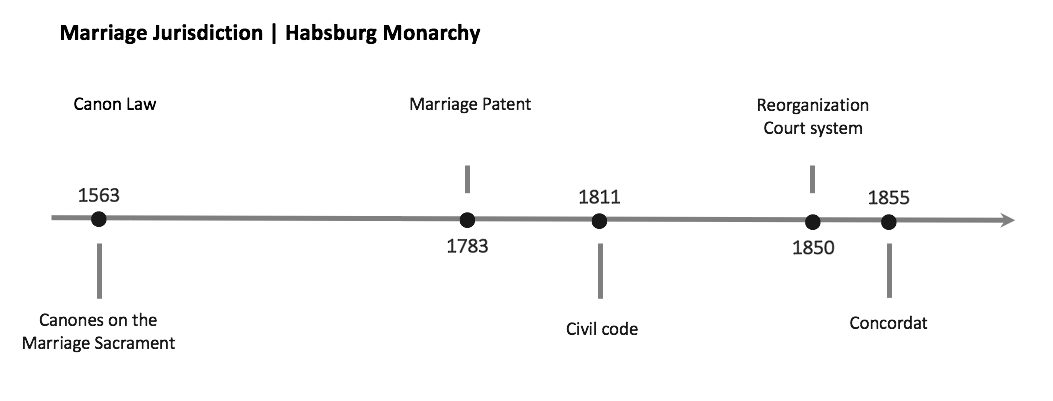The investigation period of the court practices on marriage proceedings reaches from the middle of the 16th century right up to the last third of the 19th century, and therewith crosses the usual break between the Early Modern and the Modern Period, and Pre-modernity and Modernity respectively.
The investigation of the matrimonial jurisdiction of the Catholic Church begins in 1558 and ends (for the time being) in 1783, when Joseph II’s Marriage Patent defined marriage as a civil contract and transferred the jurisdiction to the sovereign courts. 1558 was chosen as the starting point due to an increase in the amount of preserved protocol books from the consistory of the Lower Officialat of the Diocese of Passau. The first six years of the time period examined lie therewith before the passing of the Tametsi Decree in the Council of Trent in November 1563. In 1783 the jurisdiction of the church courts in matrimonial matters ended (for the time being).
We examined the secular matrimonial jurisdiction from 1783 onwards to 1850. In the Austrian history of law and historiography the importance of the ABGB (General Civil Law Code) from 1811 is particularly emphasized. Joseph II’s Marriage Patent of 1783 already constituted a significant change in regard to matrimonial jurisdiction. It defined marriage as a civil contract and transferred the matrimonial jurisdiction from the ecclesiastical courts to secular courts and authorities. Furthermore, in the first years it allowed only uncontested divorces from bed and board. We set the end of the investigation period of the secular matrimonial jurisdiction with the reorganization of the courts after the revolution of 1848. As of 1 July 1850 it was no longer the magistrates and local courts who were responsible for the marriage proceedings, but rather the district and regional courts (later county courts). Between 1857 and 1868, the last years of our investigation period, the Catholic Church had regained jurisdiction over matrimonial matters as a result of the Concordat of 1855. In 1868 the Catholic Church had to relinquish its matrimonial jurisdiction to the state courts.

Of course we were not able to investigate every single marriage proceeding throughout the course of the investigated period which stretches over three centuries. We were forced to limit ourselves to set temporal foci (cf. Data Collection).
Andrea Griesebner/Georg Tschannett, 2016, translation Jennifer Blaak, 2017
Last update: Andrea Griesebner, February 1, 2019